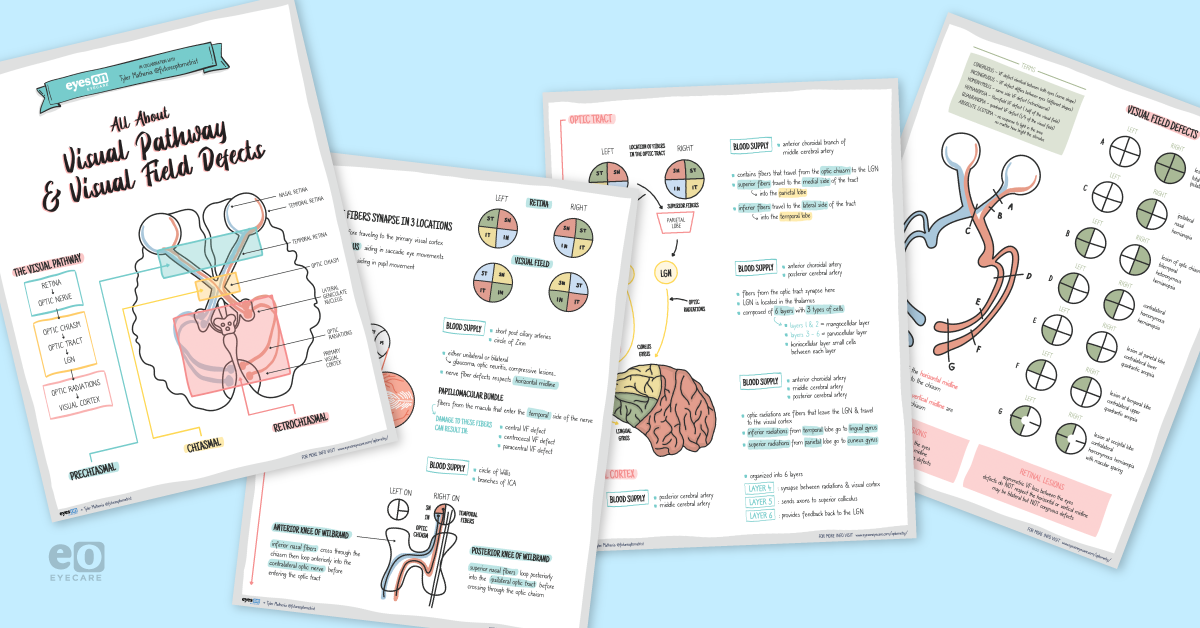The visual pathway can seem disarmingly simple at first, but like all topics in optics it is actually quite complex. From the retina to the visual cortex, there are so many ways that
pathology can disrupt vision at each point. We’ve partnered with
Tyler Mathenia to give you this downloadable clinical cheat sheet on the visual pathway and visual field defects.
This printable cheat sheet breaks down each stage of the visual pathway with diagrams, definitions, and space for your own notes. It's perfect for refreshing your memory on how pathology in the primary visual pathway can affect vision function or even for explaining visual field defects to patients!
What’s included in the illustrated guide
This illustrated guide reviews key information about the visual pathway and visual field defects, including:
- Each stage of the visual pathway: prechiasmal, chiasmal, and retrochiasmal
- Blood supply throughout the visual pathway
- Types of visual field defects
- Terms and definitions
And more!
Download the cheat sheet
Get ready for easy referencing!
What are visual field defects?
Visual field defects are a partial loss of the regular field of vision. They are caused by lesions along the visual pathway, which stretches from the retina to the visual cortex in the brain. The location of these lesions can be identified by the type of visual defect the patient is experiencing.
There are a multitude of visual field defects and corresponding causes, and
visual field testing is crucial for managing ocular disease.
What visual field defects respect the vertical midline? What about the horizontal midline?
Visual field defects that respect the vertical midline are from lesions posterior to the chiasm. Visual field defects that respect the horizontal midline are from lesions anterior to the chiasm.
Localizing the lesion will assist with diagnosis, as the location and behavior of lesions help indicate their causes.
For instance, an altitudinal field defect presents as the loss of either the superior or inferior half of the visual field but respects the horizontal median. This defect commonly suggests ischemic optic neuropathy, retinal artery occlusions, or retinal detachment.
Glaucoma, optic nerve lesions or coloboma are less common.
In contrast, an arcuate scotoma, which is a small arced visual field defect that also respects the horizontal median, most commonly suggests glaucoma, and less commonly indicates ischemic optic neuropathy, high myopia, or optic disc drusen.
Tyler Mathenia is a third-year optometry student at Chicago College of Optometry. Find him on Instagram at @futureoptometrist, and check out his shop on Etsy for cool optometry stickers and study guides!


